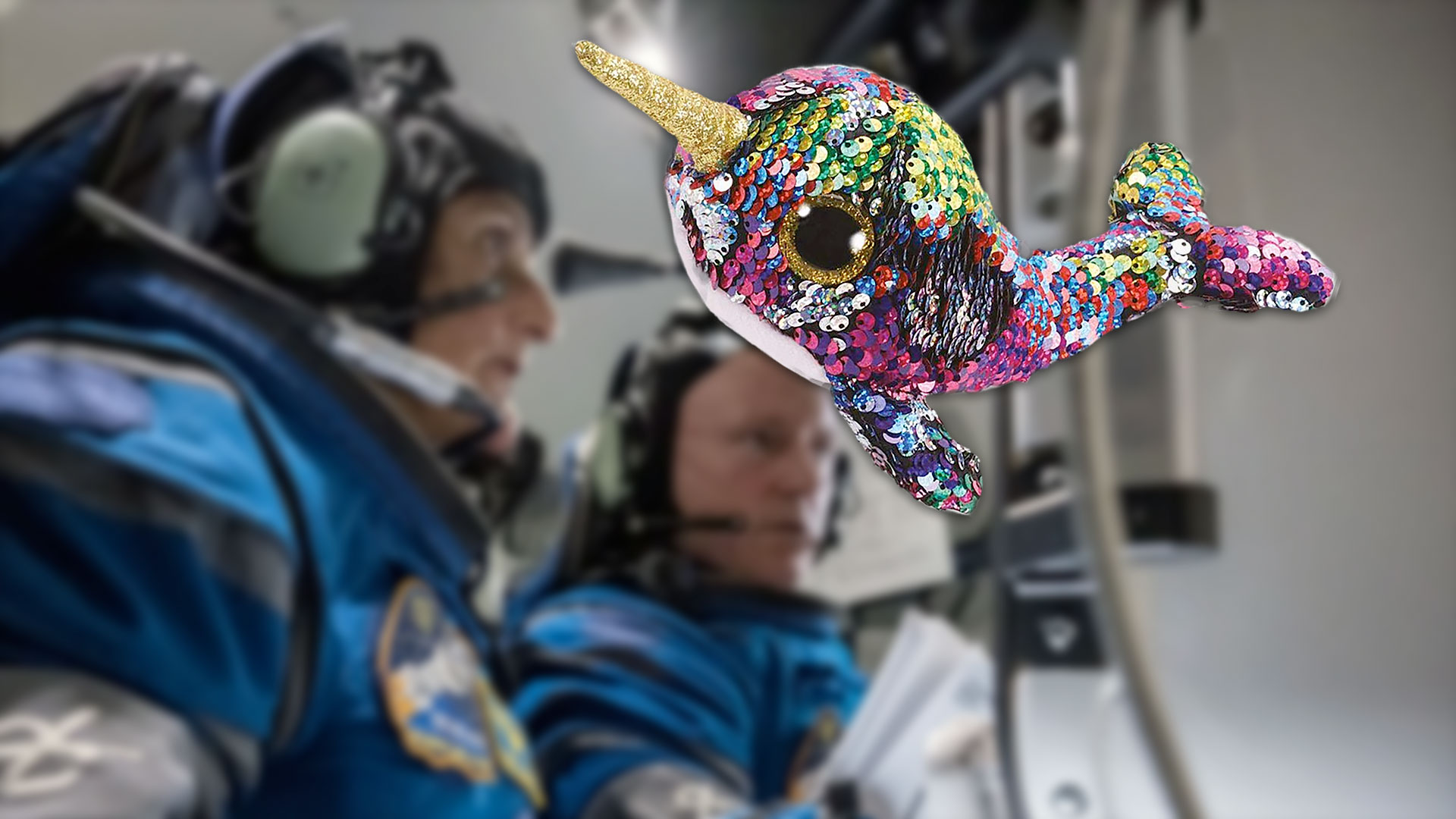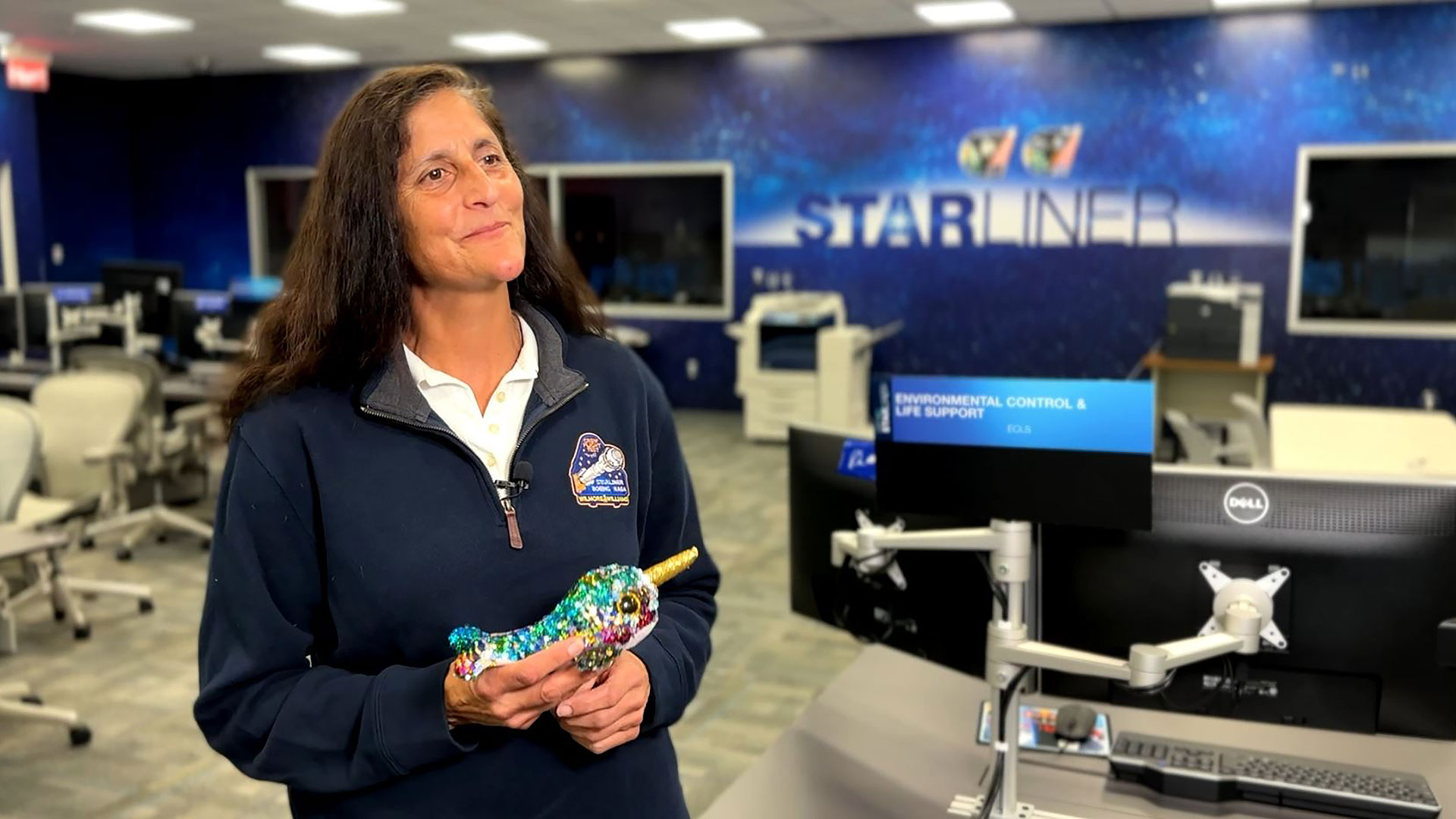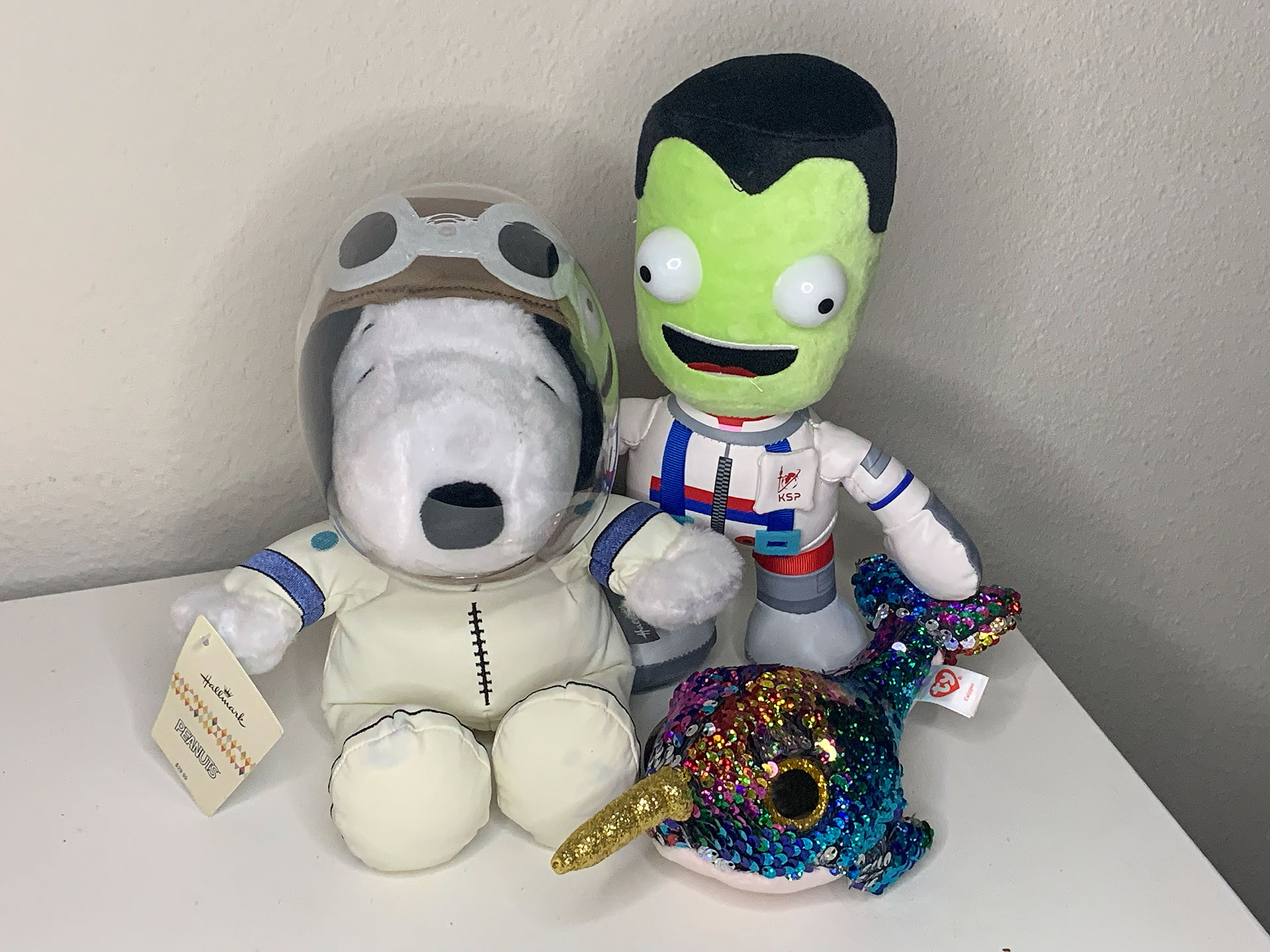'Sparkly' narwhal toy trades sea for space as Boeing Starliner zero-g indicator
'Like, is it really real? Is it really happening?'

What has one horn, two crewmates and shares a name with its ride into orbit?
"Calypso," the plush sequined narwhal that is flying with NASA astronauts Barry "Butch" Wilmore and Sunita "Suni" Williams on the crew flight test (CFT) of "Calypso," Boeing's CST-100 Starliner commercial spacecraft. A toy version of the deepest-diving marine mammal, it is soon to be the highest-flying example of its kind while serving as the crew's "zero-g indicator."
"My zero-g indicator happens to be a very sparkly narwhal whose name is 'Calypso,'" said Williams in a prelaunch interview with collectSPACE.com. "I'm excited about this little guy."
Related: Boeing Starliner 1st astronaut flight: Live updates
Like past zero-g indicators, "Calypso," the doll, will begin to float as "Calypso," the capsule, reaches orbit, signaling to Wilmore and Williams that they have entered the microgravity environment of outer space and are on their way to dock with the International Space Station.
Williams said that the narwhal reflects her and Wilmore's excitement to be flying on this long-awaited mission. Their test flight will pave the way for operational Starliner flights to begin rotating crews to and from the space station for NASA.
"A narwhal is one of those things that looks like the sister or brother to a unicorn. Like, is it really real? Is it really happening?" said Williams. "Yes, it's really real. And it's really happening."
Narwhals are indeed real. Found in the icy waters of the Arctic, they are medium-size whales that typically are mottled with brown and black markings. Male narwhals grow a canine tooth into a single tusk that can protrude from their jaw as much as 10 feet (3 meters).
Williams' niece and nephew picked out the narwhal doll to fly on Starliner. "I gave them a couple options, so long as it was something from the sea," said Williams.
Get the Space.com Newsletter
Breaking space news, the latest updates on rocket launches, skywatching events and more!

The underwater theme stems from Williams' personal love for the ocean. A Navy test pilot, she tapped into the same interest five years ago when she was given the honor of naming her then-future spacecraft. She chose "Calypso" as a tribute to oceanographer Jacques Cousteau and his research vessel of the same name.
"Cousteau had this amazing ship, did amazing exploration all over the world and opened eyes for so many people to learn about the ocean, and I think that's what the spacecraft will do," she said in a statement released by Boeing.
That "Calypso," the narwhal, and "Calypso," the capsule, share the same name was sheer coincidence. The doll was named such by its manufacturer, Ty (of Beanie Babies fame), when it was released for sale in 2019, long before Williams' niece and nephew went searching for their aunt's zero-g indicator.
"It was the right narwhal," Williams told collectSPACE.
Zero-g indicators are a tradition that date back to the first human spaceflight, when in 1961 cosmonaut Yuri Gagarin took a small doll with him to watch it float. The custom continued as a solely Russian activity until 2019, when SpaceX borrowed the idea for its crews launching on Dragon spacecraft to the International Space Station.
NASA later followed, flying its first zero-g indicator on Artemis 1, its 2022 uncrewed mission around the moon.

Boeing also flew toys on the first two uncrewed flights of Starliner. A spacesuit-clad astronaut Snoopy and a Kerbal Space Program alien "Jeb" launched on the spacecraft's orbital flight test (OFT) in 2019 and on OFT-2 in 2022, respectively.
Boeing revealed "Calypso" the narwhal during the live webcast of the countdown to the CFT launch, because live video from inside the capsule won't be enabled on this test flight until Wilmore and Williams are at the space station. Williams said that she liked the idea of kids tuning in to try to spot the rainbow sequined doll.
"I love that kids would do a treasure hunt to try and find it," Williams said. "When it's revealed, hopefully it's something impressive, a little bit sparkly and a little bit fun."
Follow collectSPACE.com on Facebook and on Twitter at @collectSPACE. Copyright 2024 collectSPACE.com. All rights reserved.
Join our Space Forums to keep talking space on the latest missions, night sky and more! And if you have a news tip, correction or comment, let us know at: community@space.com.

Robert Pearlman is a space historian, journalist and the founder and editor of collectSPACE.com, a daily news publication and community devoted to space history with a particular focus on how and where space exploration intersects with pop culture. Pearlman is also a contributing writer for Space.com and co-author of "Space Stations: The Art, Science, and Reality of Working in Space” published by Smithsonian Books in 2018.In 2009, he was inducted into the U.S. Space Camp Hall of Fame in Huntsville, Alabama. In 2021, he was honored by the American Astronautical Society with the Ordway Award for Sustained Excellence in Spaceflight History. In 2023, the National Space Club Florida Committee recognized Pearlman with the Kolcum News and Communications Award for excellence in telling the space story along the Space Coast and throughout the world.
-
COLGeek It was secured just prior to mission scrub. Not relevant to the cancellation reason. :rolleyes:Reply

